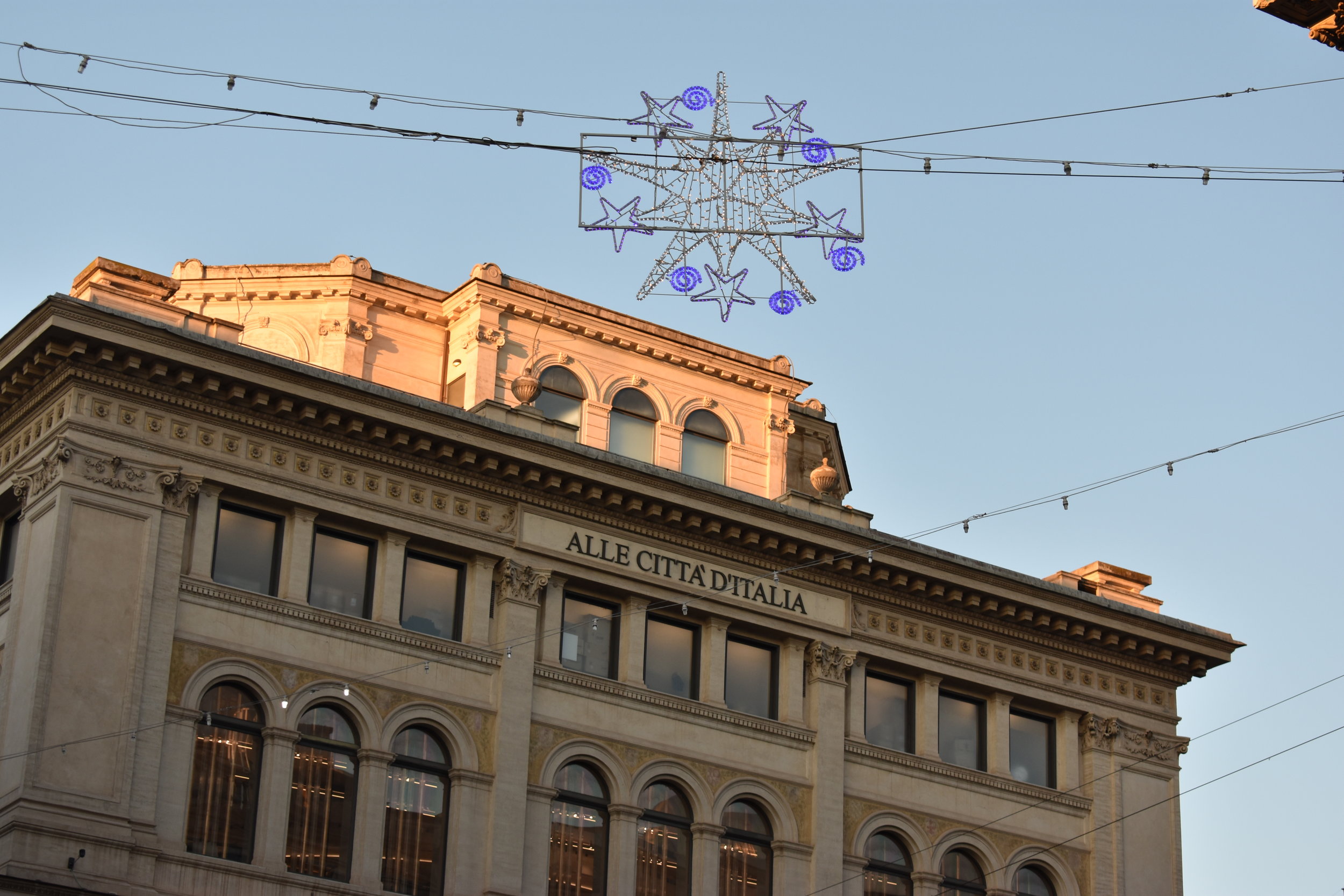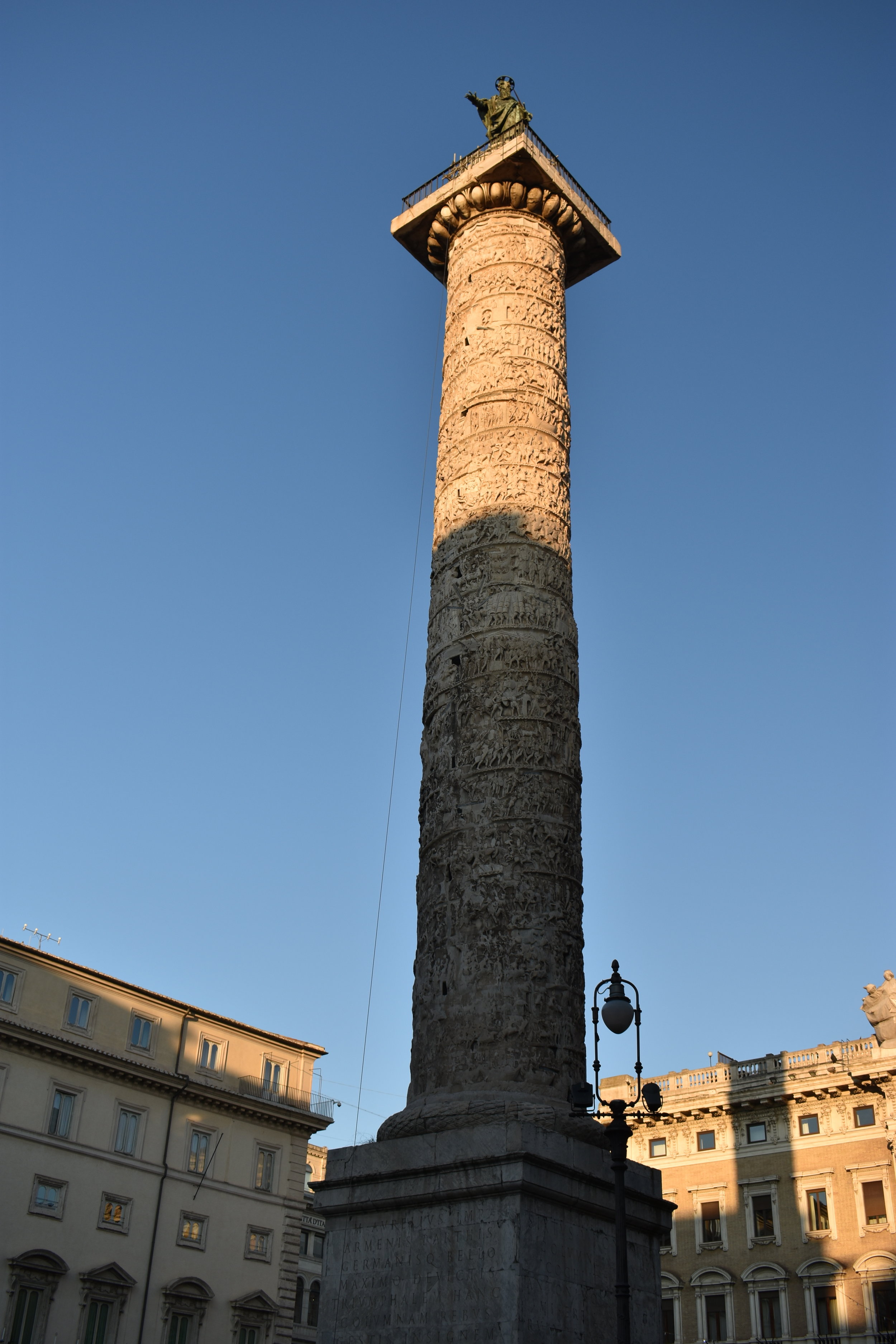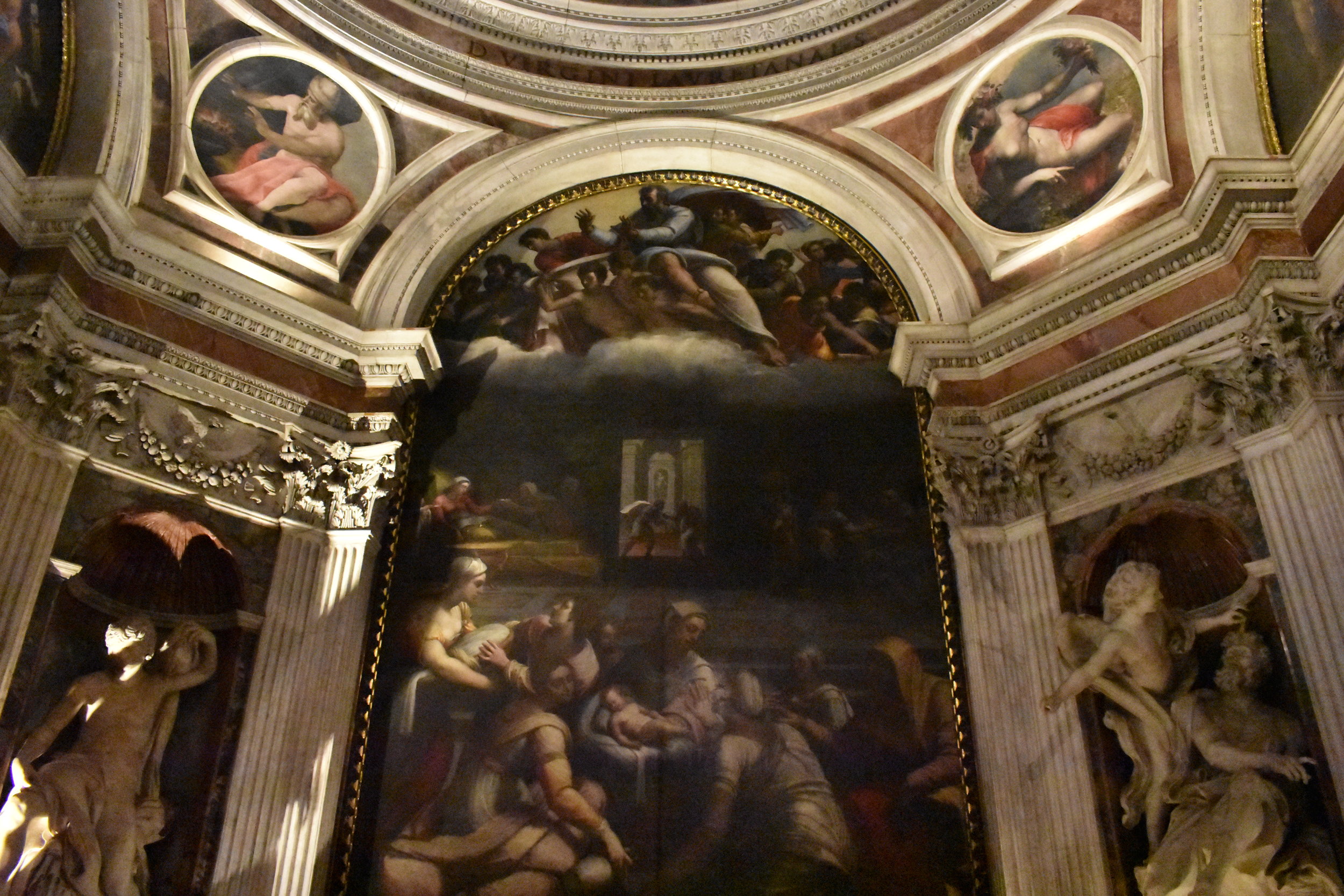Travel With Me: Rome, Italy (Day Two)
Our second day in Rome, Ryan and I woke up early yet again to catch the metro over to Vatican City. The last Sunday of the month, the Vatican Museums are free, and being the thrifty people we are, we were willing to brave the crowds to avoid the 17 euros each for a ticket. However, we did not anticipate how crowded it would be. When we arrived an hour before the museum doors opened, the line stretched ridiculously long, disappearing around the corner of the Vatican wall. Nevertheless, we persisted, standing in line for over an hour, and I’d say it was worth it—the line moved relatively quickly, and once we were inside, the crowds weren’t unbearable.
The Vatican Museums house the massive amounts of art the popes have accumulated over the centuries, from Roman sculptures to Renaissance triptychs. As my mom would say, the most astounding part about the museum is that only 20,000 of its 70,000 works are on display, meaning the most precious treasures are probably in its vaults. Most famously, the Vatican Museums are home to the Sistine Chapel, with its famous ceiling painted by Michelangelo.
The “museum” is actually split up into several museums, each of which serve a different theme or purpose. The Pinacoteca Vaticana, for example, is a gallery for paintings, housing works such as Raphael’s Transfiguration and Leonardo da Vinci’s St. Jerome in the Wilderness, while Museo Pio-Clementino houses Greek and Roman sculptures, including Laocoön and His Sons.
As you can see, most of my photos are of the architecture of the museum itself and its breathtaking ceilings. In the least pretentious way possible, I don’t like to take photos of artwork at museums because it feel like ticking famous works off a bucket list instead of appreciating what’s in front of you (not to mention, the photos never do the real thing justice). I’ve been privileged enough to visit museums like the Louvre, the British Museum, and the National Gallery multiple times, and I’ve never once felt the need to go through those photos again.
Speaking of breathtaking ceilings, the Sistine Chapel and its famous ceiling was a bit of a different experience than I expected. We were shuffled along a hallway, and I couldn’t help but feel like a school of fish, being forced to follow the flow of the water. When we emerged into the chapel itself, it was packed with a square of people in the middle, with a narrow channel between this crowd and those sitting on benches along the wall. The channel was the only way to exit, and the security pressured you to either join the crowd in the center of the room, keep moving in the channel, or sit on the wall. We were lucky enough to grab seats, though it was difficult to focus on either the audioguides or the artwork surrounding us, as a security guard would come over the speaker every five to ten minutes to say, “Silence. Silencio. No photography.” And if that didn’t break your concentration, the security guards scattered throughout the room who constantly had to yell at tourists for sneaking phone photos did. Don’t get me wrong—it was an unforgettable experience to see such a masterpiece. But something about the sacredness of a chapel painted by Michelangelo is lost when its stuffed full of loud tourists and angry security guards.
Castel Sant’Angelo & The River Tiber
From the Vatican, Ryan and I walked towards Castel Sant’Angelo, or the Mausoleum of Hadrian. This structure was built by Emperor Hadrian to serve as a mausoleum for him and his family, and it was once the tallest building in Rome. Since its construction, it has been used as a military fortress, a castle for the popes, and a papal prison. It is now a museum.
Directly across from the castle is the Ponte Sant’Angelo, which provides a beautiful view of the River Tiber.
Piazza Navona
This impressive fountain, depicting the Roman god Neptune fighting with an octopus, is located in Piazza Navona, one of Rome’s busier squares. The original fountain built in 1574 was only the marble base, and it wasn’t until efforts were made to increase the visual and political importance of urban fountains in Rome in 1878 that the statues were added.
The Pantheon
The Pantheon is one of the best preserved of all ancient Roman buildings, as it has been in continuous use since being built in about 126 AD. It was constructed by Emperor Hadrian on the site of an earlier temple, then in 609, it was converted to a Christian church by Pope Boniface IV. This conversion saved it from the abandonment that many ancient Roman structures suffered during the medieval period.
As for the architecture of the building, it is comprised of a unique domed cella, with a conventional Roman temple portico at its front. The dome spans 150 Roman feet, the oculus is 30 Roman feet in diameter, and the doorway is 40 Roman feet high.The Pantheon still holds the record for the world's largest unreinforced concrete dome, over 1,000 years later.
Basilica Parrocchiale Santa Maria del Popolo
Ryan and I hadn’t planned to visit this church, but our B&B host gave us an inside tip that it was a beautiful (and free) place to see some beautiful works of art. Located in the Piazza del Popolo, this unassuming church contains works by painters such as Raphael, Gian Lorenzo Bernini, and Caravaggio. I love Caravaggio (and will never forget learning about chiaroscuro in Art History thanks to him), so this find was certainly an unexpected highlight of the night!
Sunset over Piazza del Popolo
We ended the night by climbing a lot of steps to be greeted by a sunset view over the piazza—a fitting end to another wonderful day in Rome.
Thanks for reading! Don’t forget to hit the heart button below if you liked this post!

















































